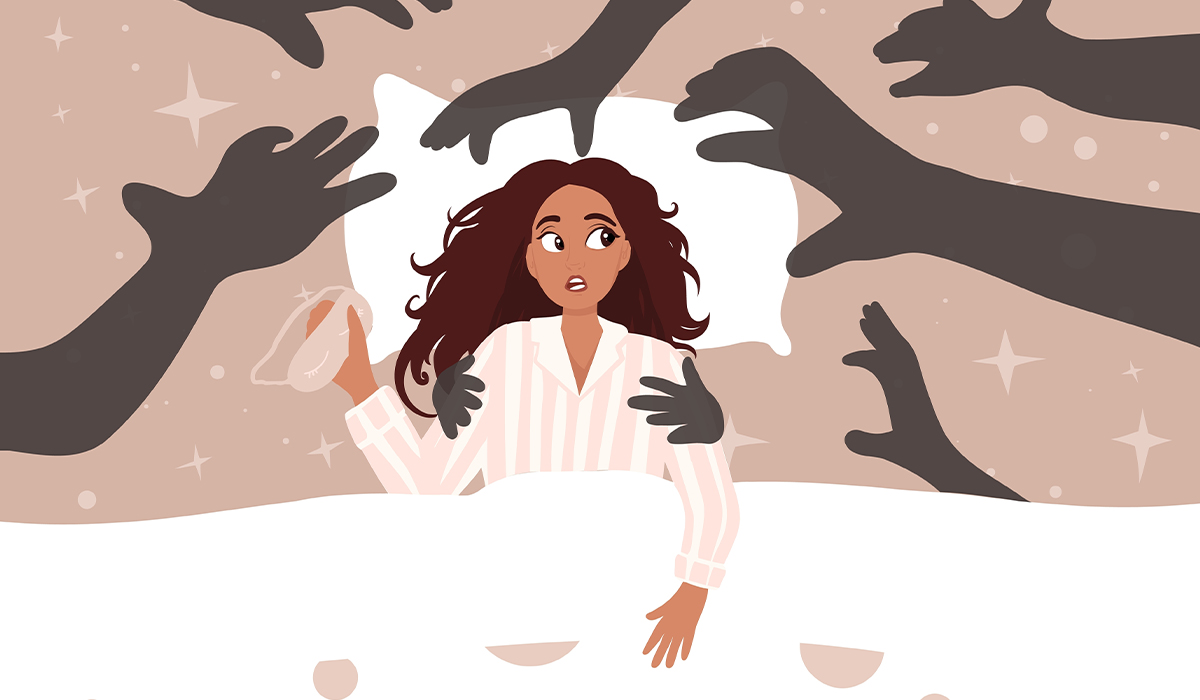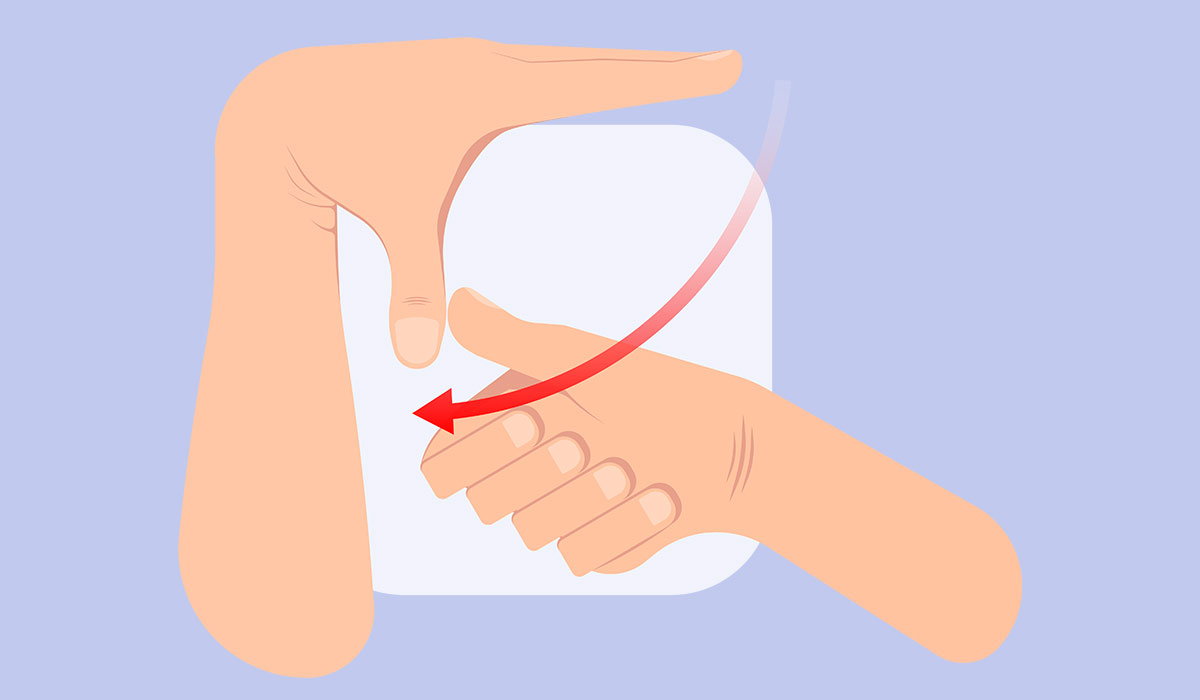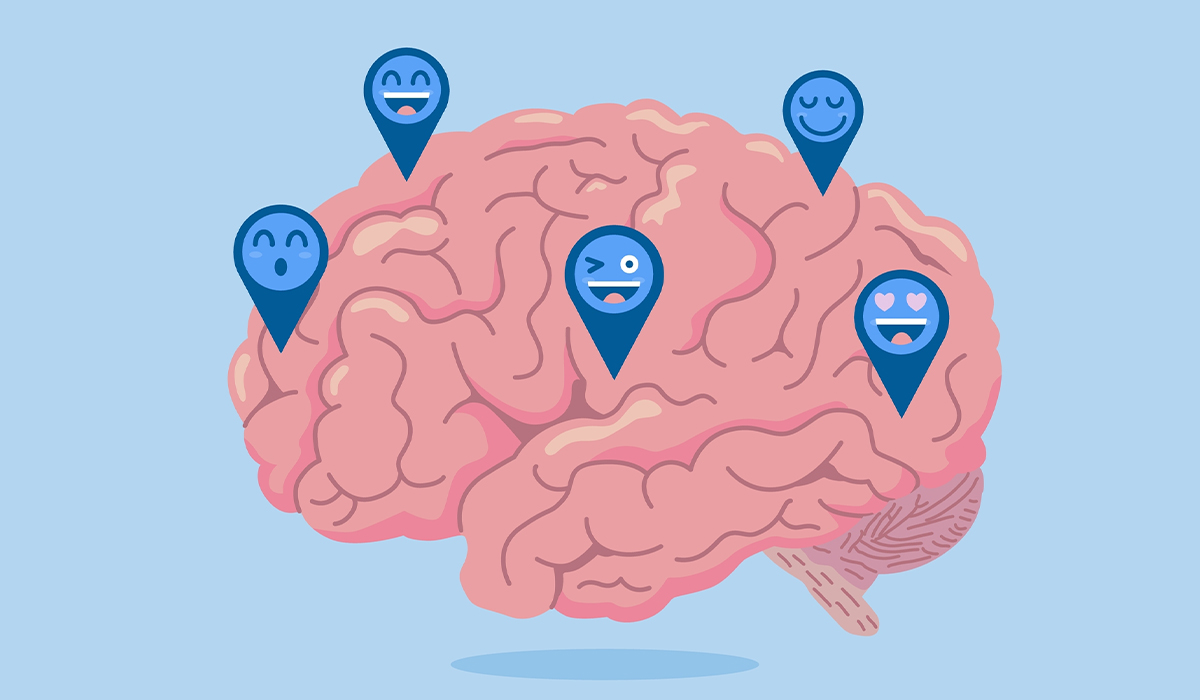Restless legs syndrome (RLS) is a set of symptoms characterized by unpleasant sensory sensations in the lower limbs that worsen at rest. These annoying sensations make the individual feel compelled to move their limbs constantly. Another name for this disease is Wittmaack-Ekbom disease (WED).
According to epidemiological statistics, approximately 5% of the population suffers from RLS. Many of these people are not aware that restless legs syndrome can be treated and do not report this problem to the doctor's office, which affects the deterioration of their health and well-being. The condition worsens with age. Interestingly, people suffering from various sleep-related problems, including insomnia or simply having trouble falling asleep, are particularly susceptible to restless legs syndrome. Specialists point out that the influence of genetic factors is also significant. This is because restless legs syndrome and the symptoms characteristic of this condition are more common in people whose parents also suffered from this disease.

Experts still do not agree on one specific cause of restless legs syndrome. Most likely, they are primary, i.e., genetically inherited, or secondary, like many other neurological disorders.
As mentioned above, the risk of developing restless legs syndrome increases if a family member has suffered from this condition. This is especially the case when the disease appears around 35. If symptoms appear later, restless legs syndrome accompanies other diseases. Then, we are talking about a type of disorder secondary to other diseases and dysfunctions of the body.
Secondary causes of restless legs syndrome![]() include:
include:
Restless legs syndrome![]() should not be confused with regular night cramps. These are two completely different diseases and can be easily distinguished. The latter occurs as a result of fatigue or electrolyte deficiency. In case of cramps, doctors recommend using medications that do not help with restless legs syndrome.
should not be confused with regular night cramps. These are two completely different diseases and can be easily distinguished. The latter occurs as a result of fatigue or electrolyte deficiency. In case of cramps, doctors recommend using medications that do not help with restless legs syndrome.
Some conditions may cause similar symptoms and cause secondary restless legs syndrome. In such a case, treatment should begin with the primary disease removal. RLS symptoms most often accompany conditions![]() such as:
such as:
Restless legs syndrome may also occur after excessive exercise.
Describing the symptoms of restless legs syndrome![]() can be challenging, and patients are often unsure how to describe the symptoms they are experiencing. The most common terms you may encounter are:
can be challenging, and patients are often unsure how to describe the symptoms they are experiencing. The most common terms you may encounter are:
Discomfort most often occurs in the feet, lower legs, thighs, and pelvic area, and in advanced forms, it also appears in the chest and upper limbs.
Symptoms associated with restless legs syndrome most often appear in both lower limbs simultaneously, although they may be more severe on one side. When feeling pain (rarely), the patient complains of a dull pain located “deep in the legs.”
Symptoms of restless legs disease appear not only at rest. The longer the patient stays in immobility, the greater the risk of symptoms that attack with varying frequency (this may happen several times a year, and in advanced cases, the symptoms are felt even every day). Sometimes, the intervals between the manifestations of restless legs syndrome can be up to several years.
The symptoms of the disease disappear almost immediately during movement. For this reason, the suffering individual begins to move their limbs and feels the need to walk because the movement eliminates discomfort and brings relief.

As the disease progresses, the troublesome symptoms of restless legs syndrome become more severe. Therefore, it is necessary to remember that early implementation of therapy gives a chance to slow down or stop the development of RLS. Delaying final diagnosis or treatment may make further treatment more burdensome for the patient.
As mentioned above, some patients have difficulty falling asleep (even insomnia) because their discomfort and need for movement make it difficult or impossible to fall asleep. It is because unpleasant sensory experiences bother the patient mainly in the evening and at night.
Additionally, there are the so-called periodic limb movements during sleep![]() (PLMD), which wake the patient from sleep. Very regular leg movements characterize this symptom. They are repeated in series and involve straightening the big toe and dorsiflexing the foot. This movement is often accompanied by flexion of the knee and hip joints. Such a single movement does not last long (only about 0.5-5 seconds), while the intervals between individual movements in a series are usually about 20 or even 40 seconds.
(PLMD), which wake the patient from sleep. Very regular leg movements characterize this symptom. They are repeated in series and involve straightening the big toe and dorsiflexing the foot. This movement is often accompanied by flexion of the knee and hip joints. Such a single movement does not last long (only about 0.5-5 seconds), while the intervals between individual movements in a series are usually about 20 or even 40 seconds.
It is worth noting that restless legs syndrome can also be bothersome for people sleeping in the same bed as an individual with this condition. Such uncontrolled movements are usually described as “kicking in sleep” and, if severe, may also affect the awakening of the person suffering from RLS.
It is worth noting that pregnancy![]() may worsen the manifestations of restless legs syndrome. It occurs predominantly during the third trimester of pregnancy. Fortunately, symptoms usually subside or return to their original severity within a month after the baby is born. Specialists disagree on what is usually the primary cause of the disease. Still, in pregnant women, it may be related to hormonal changes, specifically increased estrogen levels or folic acid deficiencies, the reserves consumed by the rapidly developing fetus.
may worsen the manifestations of restless legs syndrome. It occurs predominantly during the third trimester of pregnancy. Fortunately, symptoms usually subside or return to their original severity within a month after the baby is born. Specialists disagree on what is usually the primary cause of the disease. Still, in pregnant women, it may be related to hormonal changes, specifically increased estrogen levels or folic acid deficiencies, the reserves consumed by the rapidly developing fetus.
It is worth remembering that most medications used to treat restless legs syndrome are contraindicated in pregnant women. Therefore, specialists base the treatment on relaxation and manual treatments in this case. For example, leg massages and appropriate exercises will be great.
Detailed diagnostic criteria for this condition have been introduced to improve the diagnosis of restless legs syndrome.
The primary mandatory criteria in diagnostics![]() include:
include:
Some of the additional criteria for diagnosing restless legs disease are:
Doctors usually diagnose restless legs syndrome based on the interview and the characteristic clinical picture of the condition. It is also important to exclude other diseases that may cause similar symptoms. Moreover, the specialist must determine whether the patient is taking medications that may cause restless legs syndrome and the symptoms characteristic of this disease. For this reason, the patient should be ordered to undergo a blood test, which will allow the exclusion of diseases such as:
Once the cause of the condition is determined, treatment![]() can begin.
can begin.
If restless legs syndrome is caused by vitamin deficiencies![]() , it is worth changing your diet to a more varied one or introducing supplements containing iron, magnesium, vitamin B12, vitamin D, and vitamin C. As specialists have shown, one of the causes of exacerbation of the symptoms of the disease is iron deficiency, which translates into disturbed dopamine synthesis. It, in turn, disrupts proper communication between nerve connections and may lead to unpleasant symptoms. Vitamin C in such preparations ensures high iron absorption and accelerates metabolism.
, it is worth changing your diet to a more varied one or introducing supplements containing iron, magnesium, vitamin B12, vitamin D, and vitamin C. As specialists have shown, one of the causes of exacerbation of the symptoms of the disease is iron deficiency, which translates into disturbed dopamine synthesis. It, in turn, disrupts proper communication between nerve connections and may lead to unpleasant symptoms. Vitamin C in such preparations ensures high iron absorption and accelerates metabolism.
In turn, supplementation of B vitamins helps maintain proper energy metabolism. It also aims to improve the body's absorption of magnesium, an element responsible for properly transmitting nerve impulses in cells. It reduces the likelihood of cramps and painful muscle tension. Moreover, magnesium is essential in regulating appropriate sleep and may help reduce the risk of waking up.
Before purchasing any preparation, read its composition carefully. It is also worth seeking advice from a specialist instead of choosing a given drug on your own. Additionally, the appropriate proportions of ingredients are significant to ensure effective relief of the symptoms of the disease. The preparation must be easy to use, and the leaflet must be read before taking it.
For many people, restless legs syndrome is a symptom caused by other diseases. In such a situation, the RLS treatment involves treating the underlying disease.
A specialist selects the appropriate medicine. It always depends on the symptoms of the disease, their severity, and nuisance (the extent to which they make the patient's life difficult and affect its quality). Dopaminergic drugs![]() and dopamine agonists
and dopamine agonists![]() are most often used in pharmacotherapy. If the response to prescribed dopaminergic drugs is insufficient or adverse effects of these drugs occur, certain antiepileptic drugs
are most often used in pharmacotherapy. If the response to prescribed dopaminergic drugs is insufficient or adverse effects of these drugs occur, certain antiepileptic drugs![]() are used. However, in the case of severe, drug-resistant forms of restless legs syndrome, the specialist may prescribe small doses of opioid medications
are used. However, in the case of severe, drug-resistant forms of restless legs syndrome, the specialist may prescribe small doses of opioid medications![]() .
.

As mentioned above, agents used to treat restless legs syndrome include substances stimulating the dopaminergic system. These measures reduce the feeling of unpleasant symptoms and improve the quality of night sleep. The method of administering drugs for restless legs syndrome depends primarily on the type of sleep problem, and the doctor's dosage is individualized for each case. If the main complaint is difficulty falling asleep, dopaminergic drugs are taken one hour before bedtime. However, for individuals who have problems during the day, the drug can be administered twice a day, in the afternoon and evening.
Dopaminergic preparations may be insufficient after taking the substance for some time, especially in large doses. Then, a phenomenon called augmentation may occur. It means that the symptoms of restless legs syndrome are getting worse, appear more often than before treatment, and may also affect other parts of the body. You should report this situation to your doctor, and the specialist will prescribe another medicine that will be more suitable for your case.
The second group used in the treatment of restless legs syndrome is dopamine agonists. These agents have a similar effect to dopaminergic drugs. During treatment with these substances, the phenomenon of hypersensitivity occurs much less frequently than with dopaminergic preparations. They can be used as a first-line drug or replace dopaminergic drugs, which causes the enhancement phenomenon.
Unfortunately, the prescription medications used to treat restless legs syndrome cause several side effects. The side effects of taking dopaminergic drugs include, for example, anxiety, severe mood disorders, agitation, headaches, blood pressure fluctuations, and heart rhythm disturbances. In turn, dopamine agonists may cause psychotic disorders (delirium, delusions, paranoia) and impulse control disorders.
In case of contraindications to the use of dopaminergic drugs or dopamine agonists or adverse effects, treatment with opioids is suggested. But what if they cannot be used either? Then, specialists decide to choose between antiepileptic drugs, benzodiazepines, and muscle relaxants.
Before starting treatment, it is necessary to thoroughly understand the syndrome's cause and determine whether it is primary or secondary. This is because, in the case of a secondary disease, it is necessary to treat the primary disease and adjust the drugs so that they do not interact with each other in harmful ways. Then, you can reduce the risk of disturbing side effects.
Non-pharmacological methods![]() can also be used to treat restless legs syndrome. Specialists recommend them for mild forms of the disease. Such techniques allow you to stop the progression of the disease and alleviate its symptoms.
can also be used to treat restless legs syndrome. Specialists recommend them for mild forms of the disease. Such techniques allow you to stop the progression of the disease and alleviate its symptoms.
First of all, you should avoid factors that worsen the symptoms (e.g., drinking coffee in the evening, drinking alcohol, or smoking nicotine products is not recommended). It may also be significant to eliminate medications that cause or worsen RLS.
Maintaining a healthy lifestyle, including regular exercise and avoiding intense exercise immediately before bed, can help reduce or prevent the symptoms of restless legs syndrome. Although specialists have not established one specific diet that helps with restless legs syndrome, it is worth paying attention to what we eat to avoid deficiencies. For this reason, you should diversify your diet with products rich in iron, magnesium, vitamin C, vitamin D, and B vitamins.
If you have a sleep problem, avoiding naps during the day is recommended. Our mattresses and pillows should be comfortable, digital devices should be muted, and the lights should be turned off. Many experts recommend that the bedroom should be cold and tidy. Moreover, going to bed and getting up simultaneously every day is recommended. Some doctors also recommend keeping a sleep diary to see which factors help, and others prevent you from getting a good night's sleep.
If the cause of restless legs syndrome is stress, it is worth introducing relaxation techniques. For example, we talk about meditation, yoga, stretching, or warm baths before bed. End the day with a massage of places where unpleasant symptoms usually occur.
It is worth informing your loved ones about your condition, which will help them better understand our behavior. It is also not advisable to suppress the urge to move as it may make symptoms worse.
Table of Contents

REM is the stage of sleep in which rapid eye movements occur. What then happens in the brain and body?… read more »

Sleep paralysis is a condition in which you experience a feeling of inertia of the entire body. What are the… read more »

Are you bothered by leg cramps? Find out what causes them. Learn about treatment methods and tips for this condition.… read more »

Insomnia is characterized by insufficient duration or unsatisfactory quality of sleep. The problem can take many forms. What are its… read more »

Ehlers-Danlos Syndrome is a group of diseases with a genetic basis. Learn all the symptoms associated with EDS. Find out… read more »

Dopamine is a chemical compound with various functions in the human body. Its levels affect overall health. Learn more about… read more »

Don't let sleep disorders take away your enjoyment of life. Find out if you have symptoms of sleep apnea. Learn… read more »

Body needs vitamin B6 for correct functioning. Check out, where you can find this vitamin. What are the signs of… read more »

What should you eat to prevent vitamin B12 deficiency? What are the most common symptoms and who is particularly at… read more »